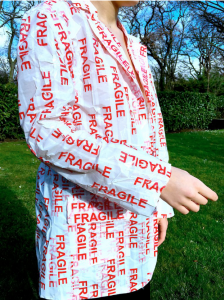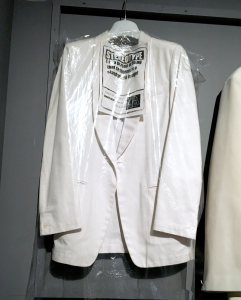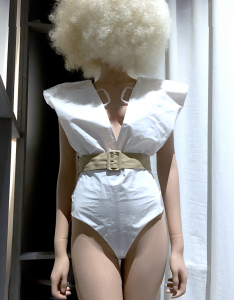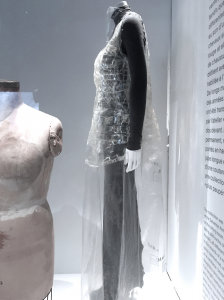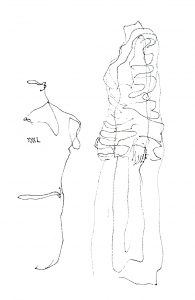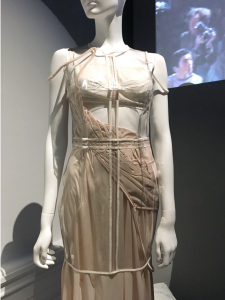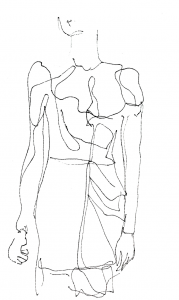Exhibition Review
MARGIELA / GALLIERA, 1989-2009
« Première rétrospective parisienne consacrée à Martin Margiela, cette exposition retrace la carrière du créateur du printemps-été 1989 au printemps-été 2009. »
Through more than 130 silhouettes, Fashionshow videos, archives and special installations, the exhibition Margiela / Galliera offers an unprecedented look at one of the most influential contemporary fashion designers. In his creations, Margiela questions both the clothing structures and the fashion systems. By his conceptual approach, the Belgian designer challenges the aesthetics of fashion of his time. By questionning fashion, clothing and its use, he studies the construction of the garment by its deconstruction, reveals its reverse, its lining, the beauty of imperfection, the unfinished, and makes visible the stages of his manufacture : pins, epaulettes, patterns, basting stitches. The notion of scale, the creation of new forms, from masculine to feminine. He focused on the status of the ancient garment, his memory and that of the divert object, its creative recovery to its transformation.
Margiela questions the obsolescence of the garment with his line of clothes called “Artisanale”, made of vintage clothes, or recovered objects transformed into unique sewn hand pieces. Margiela recycles clothes, creates tops based on advertising billboards or Monoprix plastic bags.
In 1992, Margiela was taken down in the ghost station of the Parisian subway, Saint-Martin, following candles whose wax spread on the floor, in search of girls draped in scarves of second-hand clothes, their hands plunged into the painting. Margiela, following the lead of Japanese designers Yohji Yamamoto and Rei Kawakubo, comes to ruffle the girl, to give her humor, to put her in the heart of the chaos, where Tom Ford and Thierry Mugler want to put her in epaulettes glamor.
Martin Margiela is one of the references that comes closest to the research that I will perform in Studio. It is true, behind the crimson and sensitive black and white clichés that have been kept from his collections, it is a vision of the world that echoes to the current thinking on consumption, seeking an alternative. In my creative workr, I will be able to talk about this exhibition not only because it questions the social value of clothing and what it means to create clothing from recovered, atypical materials, but also and especially because fashion is also a performance and all that surrounds the creation is important. It is necessary to understand the context of clothing, by what type of woman should the clothing be worn, for which customer, in what aim, in what type of place should the presentation of clothing be held. And it is all of these crieteiras create the meaning.
Without Knowing Margiela, I started to design my own line using only recovered materials and I realized that my pieces were really close to Margiela’s creations.
Comparison Margiela / My creation
Margiela tape vest
(Back thick duck tape)
My Tape vest
(Fragile tape used to close parcels and indicate that you must pay attention to their capacity
difference)
What is different from Margiela is that my vest use a type of tape with writting on it, which directly signifies the fragility (stereotype of femininity). Also, I molded the vest directely on a man vest, and I questionned the sexualisation of clothing by reversing the side of the buttons.
The use of plastic
In Margiela’s exibition, the plastic is one of the most present recovered material. In my Research, I would like to question the meaning of using plastic in a collection, study the properties of this unconventional material, but also understand the message that I can pretend to convey in my collection.


